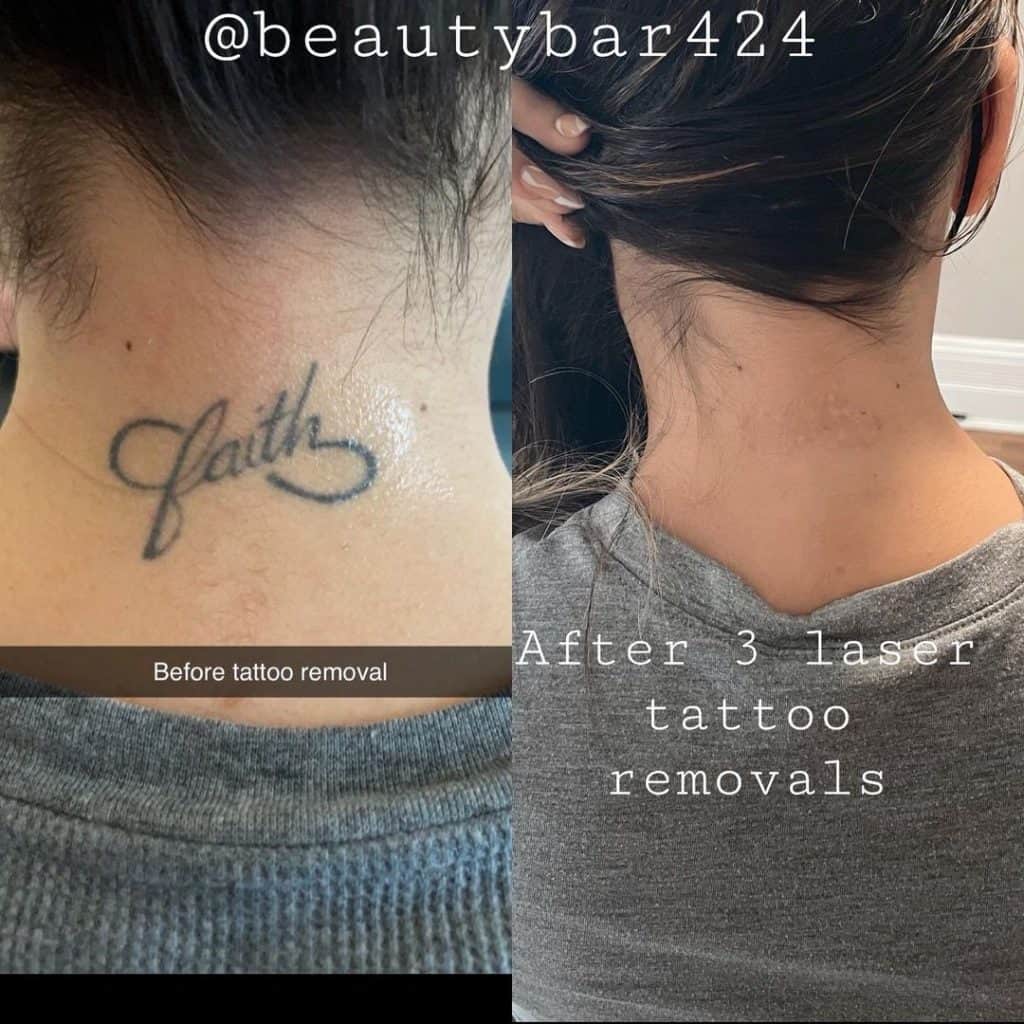
Okay, let’s talk tattoo removals, specifically when it comes to your hands.
Ever wondered if getting rid of that hand tattoo is gonna be a bigger pain than, say, one on your arm?
Like, will it take forever?
Will it hurt more?
Are you gonna be stuck with a ghost of a tattoo forever?
I get it.
These are the things that run through your head.
Let’s dive in.
Hand Tattoo Removal: The Real Deal
So, do tattoo removals on the hand take longer than other areas?
Honestly, it can, but it’s not a simple yes or no.
There are a bunch of factors that play a role.
Think of it like this: removing a tattoo isn’t like erasing a drawing.
It’s more like slowly breaking down the ink particles so your body can flush them out.
And different areas of your body react differently.
Why Hands Can Be Tricky
Your hands are kinda unique.
Here’s why removing a tattoo there might take a bit longer:
- Less Fat and Muscle: Hands are mostly bone, tendons, and skin. Less fat and muscle mean less cushion and potentially slower healing.
- Circulation: Blood flow is crucial for removing the broken-down ink. Hands, being farther from the heart, sometimes have slightly poorer circulation than, say, your back.
- Ink Density: Hand tattoos, especially finger tattoos, often fade quickly. This can lead to artists packing in more ink, which means more work for the laser.
- Sun Exposure: We use our hands all the time, and they’re constantly exposed to the sun, which can affect the ink and make removal slightly more challenging.
- Scarring: Hands are prone to scarring, and previous scarring in the area can affect the removal process.
I remember a client, Sarah, who had a knuckle tattoo she regretted.
It took a few more sessions than we initially estimated because the ink was super dense and she had some minor scarring from the original tattoo.
Patience is key!
Factors That Influence Removal Speed, No Matter Where the Tattoo Is
Okay, it’s not all about the hand itself.
Here are some other things that impact how quickly your tattoo fades:
- Ink Colors: Black ink is the easiest to remove. Green, blue, and purple inks can be more stubborn.
- Your Immune System: A healthy immune system is a superhero when it comes to clearing out those ink particles.
- Tattoo Age: Older tattoos usually fade faster than newer ones.
- Laser Technology: The type of laser used makes a HUGE difference. Pico lasers are generally faster and more effective than older Q-switched lasers.
- Professional Expertise: A skilled technician knows how to adjust the laser settings to effectively target the ink without damaging your skin.
Tips for Faster Hand Tattoo Removal
Alright, wanna speed things up? Here’s what you can do:
- Follow Aftercare Instructions: This is HUGE. Keep the area clean, moisturized, and protected from the sun.
- Stay Hydrated: Water helps your body function at its best, including flushing out ink.
- Boost Your Immune System: Eat healthy, get enough sleep, and manage stress.
- Avoid Smoking: Smoking restricts blood flow and hinders healing.
- Choose a Qualified Technician: Do your research and find someone with experience and a good reputation.
- Be Patient: Tattoo removal is a process. Don’t expect overnight results.
What to Expect During Hand Tattoo Removal
So, what’s the actual process like?
Generally, it’s similar to tattoo removal on other body parts:
- Consultation: The technician will assess your tattoo and discuss your goals.
- Protection: You’ll wear eye protection to shield your eyes from the laser.
- Laser Treatment: The technician will use the laser to break down the ink particles.
- Cooling: The area will be cooled to soothe the skin.
- Aftercare: You’ll receive instructions on how to care for the treated area.
You’ll likely need multiple sessions, spaced several weeks apart, to see significant fading.
FAQs About Hand Tattoo Removal
Got more questions? I bet you do!
Here are some common ones I hear all the time:
Q: Does hand tattoo removal hurt more?
A: It can be a bit more sensitive because there’s less fat and muscle. But most people describe it as feeling like a rubber band snapping against the skin. We can use numbing cream to help manage the discomfort.
Q: Will my hand tattoo completely disappear?
A: In most cases, yes! But it depends on the factors we talked about earlier. Some tattoos may leave a faint shadow, especially if the ink was very dense.
Q: How much does hand tattoo removal cost?
A: The cost varies depending on the size and complexity of the tattoo, as well as the clinic’s pricing. Expect to pay per session.
Q: How long do I have to wait between sessions?
A: Usually, 6-8 weeks. This gives your skin time to heal and your body time to flush out the ink.
Q: Can I get another tattoo over the area after removal?
A: Absolutely! Once the skin has fully healed, you can get a new tattoo. Many people choose to cover up unwanted tattoos this way.
Ultimately, remember that everyone’s experience is different.
Don’t get discouraged if your hand tattoo removal takes a bit longer than expected.
Just stay consistent with your treatments and follow your technician’s advice.
And remember, finding a reputable clinic is key for successful tattoo removal.
In conclusion, while hand tattoo removal can sometimes take longer, understanding the factors involved and working with a skilled technician can help you achieve the best possible results.




